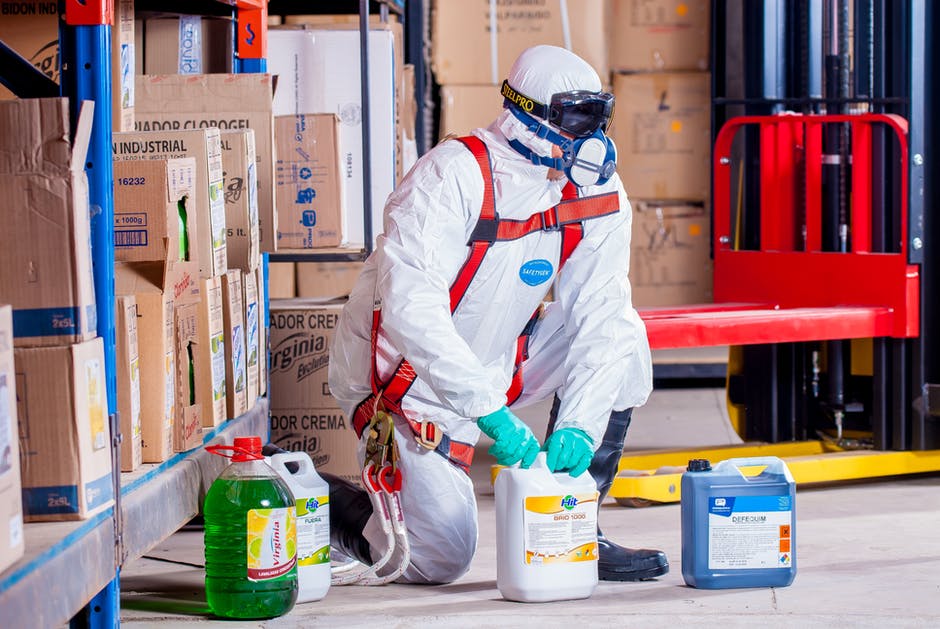Did you know that around 10 million tons of toxic chemicals are released into the environment every year? While we can’t do much to change what the large corporations are doing, we can certainly start small with our own small businesses and homes.
So how much do you know about chemical disposal? Are you sure you’re getting rid of chemicals in the right way?
Even if you feel confident, it wouldn’t hurt to have a refresher. Here’s a chemical disposal guide to help you out!
How to Handle Household Waste
The disposal of household waste will depend on what exactly you’re dealing with. The best way to figure things out is to take a look at the labels, as many manufacturers will give you good suggestions on how to handle hazardous waste. Also, the best thing to do is to use up as many chemicals as you can so there’s less waste to dispose of.
Here are several ways to handle your household waste.
Recycle
This might come as a surprise, but you can actually recycle some chemicals.
For example, you can easily recycle paint thinner at home. Just pour the leftover into a jar and let it sit for a few days. Once the solids settle on the bottom, you can reuse the liquid on top by pouring it into a new container and sealing it.
As for oil and transmission fluids, you’ll be able to find local collection points at places such as gas stations. They’ll usually take car batteries too.
Throw It in the Trash
The majority of hazardous waste cannot be thrown into the trash.
However, there are a few exceptions, so a good way to find out what they are is to call your local landfill. They’ll be able to advise you on how to dispose of your waste, but generally, you’ll want to empty and rinse out the containers before you throw them in the trash.
Flush It
Like the previous section, flushing is not recommended for most chemicals. But there are some exceptions if water can neutralize the chemicals. Your local sanitary sewage system might also be able to filter out the toxins.
Again, it’s a good idea to call the authorities, which is your wastewater treatment plant in this case. They’ll be able to tell you which chemicals can be flushed in small amounts and how to do so safely. Always make sure you use plenty of water and have good ventilation to avoid hazardous situations.
Wait for Collection Day
Many communities have waste collection days to help dispose of chemicals in a safe way. Contact your local government or any private organizations you might know of. They’ll be able to tell you which days they’ll be collecting hazardous household waste, as well as the types they’re collecting and where you should drop your waste off.
Once you know which days are collection days, make sure you store the chemicals in a safe way and place.
How to Handle Lab Waste
If you work in a lab, then it’s imperative that you handle waste correctly. Otherwise, not only might you be putting your health at risk, but you might also be breaking protocol and harming the environment.
Here are the things you need to do for chemical disposal in a lab.
Use the Right Containers
When possible, use plastic bottles to store chemical waste. Otherwise, if the chemicals will react with the plastic, use glass bottles instead.
Label the Containers Correctly
All containers must be labeled with the following information:
- Full chemical name (mixtures must have all chemicals named); no abbreviations
- Quantity of waste
- “Hazardous waste” label
- Date
- Place
- PI’s information (name and phone number)
- Bottle number that corresponds with the waste sheet
When grouping the containers, make sure you do so by compatibility, not alphabetically.
Fill Out a Hazardous Waste Information Form
You’ll want to fill out the hazardous waste information form completely. Usually, you’ll have to put the same information from the container label onto this form.
Once you’re finished, you’ll need to send it to your organization’s environmental health and safety office. The proper authorities will then arrange for the hazardous waste to be removed in a timely fashion.
However, do note that they typically don’t handle anything that’s leaking or not closed. So make sure all of your chemical disposal containers are secured.
Flush Down the Sink
In some cases, you’ll be able to flush waste down the sink. But make sure you always write to your environmental health and safety office and receive approval before you do so!
Hire a Chemical Disposal Company
No matter what your situation is, it can be a good idea to hire professionals to perform chemical disposal for you. They’ll have years of training and experience to handle any scenario.
This means you (and others, like your staff) won’t have to handle the chemicals yourself, nor do you have to take care of the disposal. All you’ll have to do is give these experts a call and they’ll safely and efficiently clean up the mess and get rid of the hazardous materials so you don’t have to!
Practice Good Chemical Disposal
Good chemical disposal is what will keep our planet cleaner and safer. So the next time you have hazardous waste, think twice about just throwing it straight into the trash.
Instead, use one of the methods above and ensure your chemicals are taken care of safely. By taking a little extra time to practice good chemical waste disposal, you’ll be making the world a greener place!
For more information on how you can look after the environment, please browse our other blog articles now.











